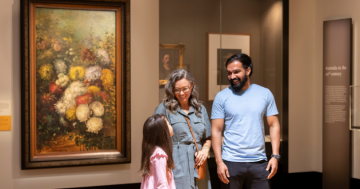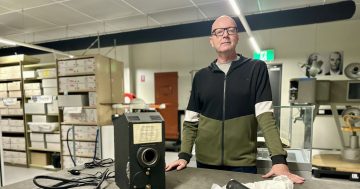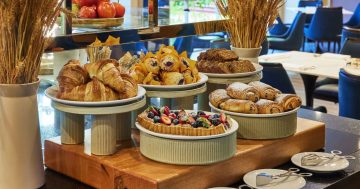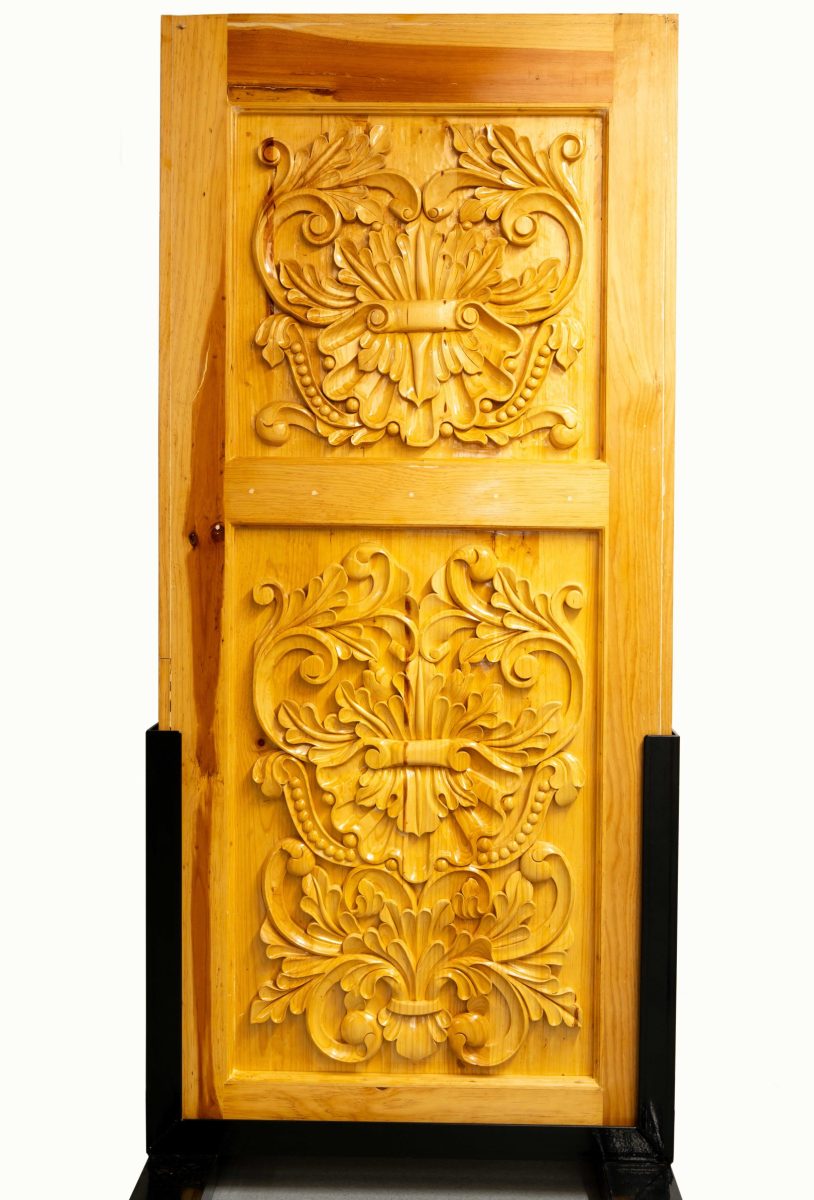
What was inside this door was more interesting than what might have been behind it. Photo: AFP Museum.
To the initiated, it just looks like a door – maybe a bit fancy in an antique South American way, but nothing sinister.
It also came through Australian border control in 2005 in the same sort of everyday FedEx packaging as whatever your latest Amazon purchase is.
And yet, inside it hid a dark secret in the form of 6 kg of pure cocaine.
“It’s not sort of packaged in a way that, ‘Oh, this looks dodgy’ – it’s coming in as just another piece of freight,” Sebastian Spencer says.
“But once the panels are lifted off, it’s then packed with these bags of cocaine … It’s maybe not the most appropriate term, but it’s very clever, and also indicative of what we’re up against.”
Mr Spencer is curator of the Australian Federal Police (AFP) Museum in Hume, and this seemingly innocuous door is one of five doors in the collection, each telling its own intriguing story.
The AFP Museum is open to the public by appointment only, but it contains more than 20,000 items from decades of international police investigations – think gas masks used in peace-keeping operations, hand-painted room signs from the victim-identification process following Thailand’s 2004 Boxing Day tsunami, and a suitcase seized during a massive drug-smuggling bust in 1989.
“This door ultimately ended up being part of an incredibly elaborate operation,” Mr Spencer continues.
“Police were able to replace the contents with fake cocaine and allow that to then follow its journey up the chain, and that allowed us to successfully capture the people at the receiving end – all because this particular object might have been chosen for random X-ray or was picked up by a drug detection dog, or one of the normal processes.”
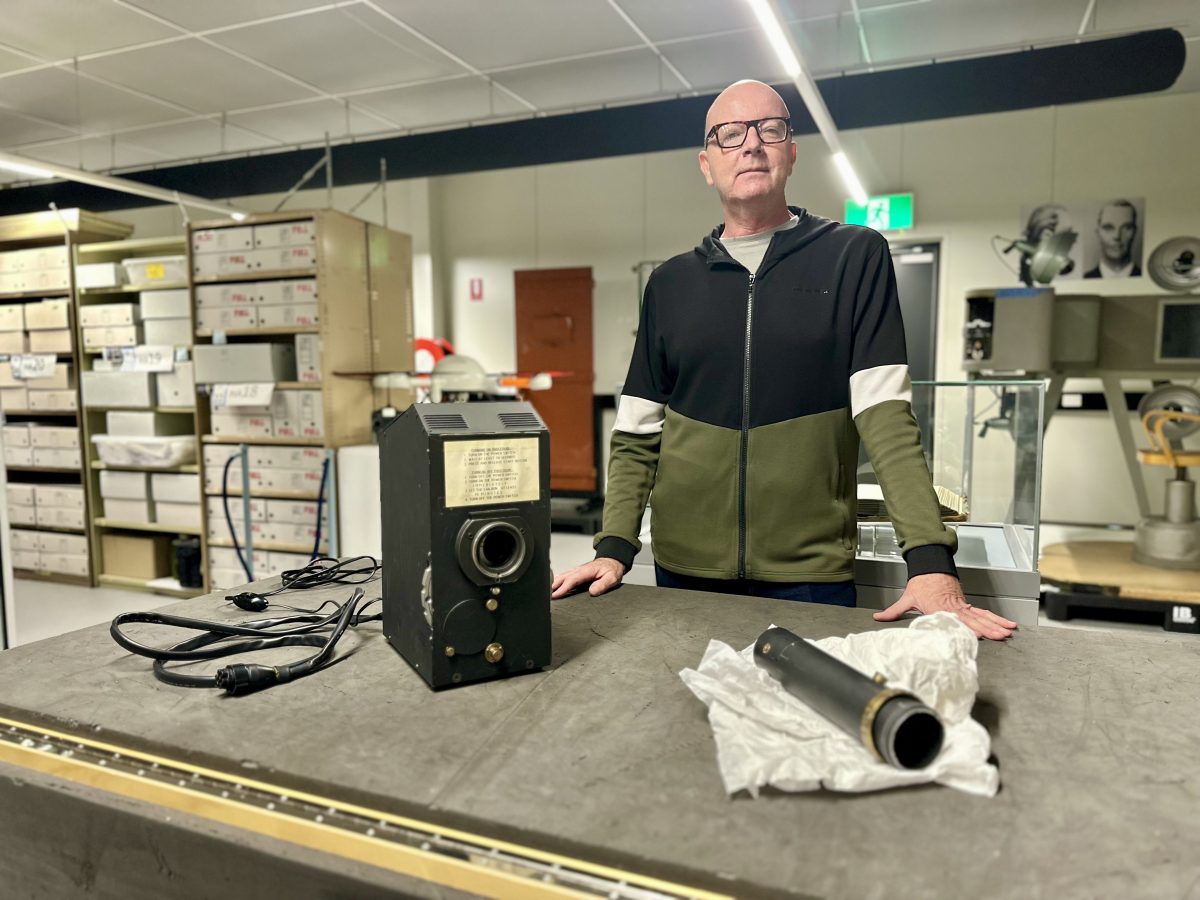
AFP Museum curator Sebastian Spencer with the ‘Polilight‘, one of the artefacts in the museum’s collection. Photo: James Coleman.
Another door – this one heavy, metal and cage-like – is a reminder of how prisoners used to be kept in Australia’s jails before the time of the AFP.
“It falls within what you’d call the very classic old-school door not dissimilar to everything you’ve seen back in the day in photographs and film,” Mr Spencer says.
“We can’t necessarily pin our door to a particular location, but we certainly know they were used in Ginninderra and Molonglo police stations at the very turn of the 20th century.”
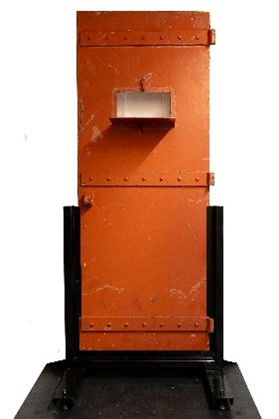
The 1880s jail cell door. Photo: AFP Museum.
A darker one is marked simply ‘Laboratory’ in Japanese characters. But behind here, the sarin gas was finessed that members of a doomsday cult then let loose on the Tokyo subway system in 1995, killing 13 people and injuring thousands of others.
“The cult experimented on livestock, so they were then able to go back to Japan to produce the sarin,” Mr Spencer explains.
“So when the new owners walked onto this site in Western Australia, and they saw the inordinate amounts of rubbish and the animal carcasses and thought that was kind of odd, that’s when the AFP got involved, working with the Western Australian police … and it all trickled down to the sarin attacks.
“Again, something as simple as a door … actually then gives us a bit of an insight and a way of explaining the investigations that allowed AFP and our Japanese counterparts to really start to work incredibly closely together.
“Terrorist attacks in Japan are quite rare, so this was a massive, massive, massive investigation on their part, and it facilitated an ongoing relationship with Australia, and particularly with the Australian Federal Police.”
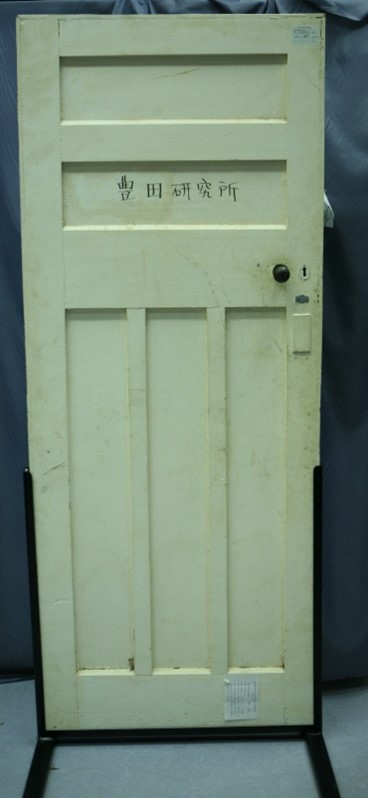
The lab door, behind which the Japanese doomsday cult perfected its deadly sarin gas recipe. Photo: AFP Museum.
The remaining two doors are from regional assistance missions in the Solomon Islands and are etched with signatures of former AFP members.
“Members who were deployed there on that mission were often there for months at a time, and so signed these two particular doors as a sort of solidarity with fellow members.”
The AFP recently exhibited some of the items from the museum in their headquarters in Barton, but Mr Spencer says members of the public are “always welcome” to arrange tours of the museum itself to see these – and many more items – for themselves.
“We always welcome further artefacts, career recollections, or information from current and former AFP members and encourage anyone who wishes to see, or become, part of our history to contact us.”
Visit the AFP Museum for more information.











